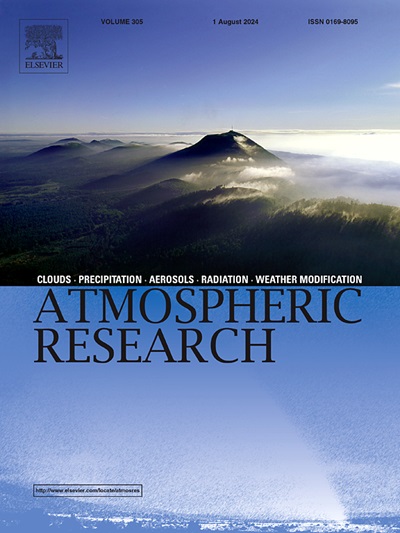Seasonal and spatial variability in the accuracy of hourly ERA5 and MERRA-2 reanalysis datasets: A 14-year comparison with observed meteorological data in Türkiye
IF 4.5
2区 地球科学
Q1 METEOROLOGY & ATMOSPHERIC SCIENCES
引用次数: 0
Abstract
This study comprehensively evaluates the performance of ERA5 and MERRA-2 reanalysis datasets in representing key meteorological parameters consisting of air temperature, mean sea level pressure, and relative humidity across Türkiye between 2010 and 2023. By comparing reanalysis data to observations from 116 meteorological stations, the analysis provides critical insights into their spatial and seasonal accuracy, revealing notable strengths and limitations. The findings confirm that ERA5 consistently outperforms MERRA-2 across all three parameters, exhibiting higher determination coefficients (R2), lower root mean square errors (RMSE), and reduced mean bias errors (MBE), particularly for air temperature and relative humidity. ERA5 demonstrated superior performance in temperature representation, with seasonal R2 values ranging from 0.85 to 0.91, while MERRA-2 exhibited lower performance, ranging from 0.75 to 0.86. Similarly, ERA5 outperformed MERRA-2 in relative humidity estimation, achieving R2 values between 0.50 and 0.75, compared to MERRA-2's lower range of 0.33 to 0.62. Both datasets performed comparably for mean sea level pressure; however, ERA5 achieved slightly lower RMSE and MBE values, particularly in winter and regions with complex topography, where MERRA-2 systematically underestimated pressure. The seasonal and spatial analyses highlight ERA5's finer spatial resolution and enable a more accurate representation of meteorological variability, particularly in topographically complex and coastal regions. Its reduced systematic biases and improved accuracy in transitional seasons underscore its suitability for high-resolution applications, such as urban climate modeling, air quality research, and hydrological simulations. Conversely, MERRA-2, with its coarser grid and pronounced biases in colder months, remains suitable for broader-scale climatological studies but may require bias correction for localized applications.
ERA5和MERRA-2逐时再分析数据集精度的季节和空间变化:与台湾14年气象观测资料的比较
本文综合评价了ERA5和MERRA-2再分析数据集对2010 - 2023年台湾地区气温、平均海平面压力和相对湿度等关键气象参数的表现。通过将再分析数据与116个气象站的观测数据进行比较,分析提供了对其空间和季节准确性的关键见解,揭示了显着的优势和局限性。研究结果证实,ERA5在所有三个参数上始终优于MERRA-2,表现出更高的决定系数(R2)、更低的均方根误差(RMSE)和更低的平均偏差误差(MBE),特别是在空气温度和相对湿度方面。ERA5的季节R2值在0.85 ~ 0.91之间,而MERRA-2的季节R2值在0.75 ~ 0.86之间,表现较差。同样,ERA5在相对湿度估计方面优于MERRA-2,实现的R2值在0.50和0.75之间,而MERRA-2的较低范围为0.33到0.62。两个数据集对平均海平面压力的表现相当;然而,ERA5的RMSE和MBE值略低,特别是在冬季和地形复杂的地区,MERRA-2系统地低估了压力。季节和空间分析强调了ERA5更精细的空间分辨率,能够更准确地表示气象变率,特别是在地形复杂和沿海地区。它减少了系统偏差,提高了过渡季节的准确性,强调了它适用于高分辨率应用,如城市气候建模、空气质量研究和水文模拟。相反,MERRA-2的网格较粗,在较冷的月份有明显的偏差,仍然适用于更大范围的气候学研究,但可能需要对局部应用进行偏差校正。
本文章由计算机程序翻译,如有差异,请以英文原文为准。
求助全文
约1分钟内获得全文
求助全文
来源期刊

Atmospheric Research
地学-气象与大气科学
CiteScore
9.40
自引率
10.90%
发文量
460
审稿时长
47 days
期刊介绍:
The journal publishes scientific papers (research papers, review articles, letters and notes) dealing with the part of the atmosphere where meteorological events occur. Attention is given to all processes extending from the earth surface to the tropopause, but special emphasis continues to be devoted to the physics of clouds, mesoscale meteorology and air pollution, i.e. atmospheric aerosols; microphysical processes; cloud dynamics and thermodynamics; numerical simulation, climatology, climate change and weather modification.
 求助内容:
求助内容: 应助结果提醒方式:
应助结果提醒方式:


